The history of career counseling from the early 1920s to the present day
Career counseling is a field that has developed over the last hundred years with the aim of helping people find their way in the world of work. Over time, the field has evolved and undergone changes in accordance with social, economic, and technological developments. The field began with basic principles and then became scientifically established, both theoretically and empirically.
The Beginning: The Origins of Career Counseling
The field of career counseling emerged in the early 20th century following the economic and social changes of the industrial revolution. Until this period, most people entered occupations according to family tradition or local opportunities. With the transition to industry and a variety of new professions, the question arose of how to match people to professions in which they could succeed (Herr, 2001).
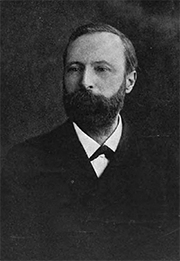
The founder of the field, who established the first center for vocational guidance and counseling in the early 20th century, is Frank Parsons. Parsons, who sought ways to prevent mistakes in career choice, wrote: "Know yourself, learn about the environment, and from this use logic to choose a professional occupation." This sentence describes a three-stage model in choosing a profession:
- Understanding the individual – identifying personal skills, abilities, interests, tendencies, limitations, traits, and values of the individual.
- Analyzing market requirements – examining existing professions and their characteristics.
- Matching between the two – finding a connection between the person and a field of occupation that suits them.
This model forms the basis for career counseling to this day and serves as a foundation for additional theories in the field (O'Brien, 2001).
Further Development of the Field of Career Counseling
The field of career counseling continued to develop, with each additional theory contributing to a deeper understanding of the connection between the person and the occupational field and the role of counseling.
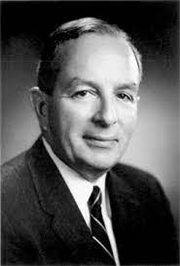
Donald Super in his Life Span, Life Space Theory (1953, and later in the 80s and 90s) argued that a person's professional identity is built and changes throughout life, just as a person's self-perception develops and changes, and therefore the choice of a professional occupation is not one-time and fixed. According to Super, there are five stages in the model: Growth, Exploration, Establishment, Maintenance, and Disengagement. The beginning of professional identity starts to develop in childhood when the child begins to understand their tendencies and values, develop self-image and a sense of capability. This is followed by a stage of research and occupational experimentation, which ends with the beginning of establishment and specialization that needs to be developed and maintained until retirement. According to Super, the role of the counselor is to accompany the person throughout the stages of professional development and help them understand the professional process they are going through (Hartung, 2013).
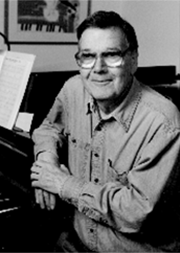
John Holland developed the Holland Occupational Themes model (1959), which is one of the most important and influential models in the field of career counseling and forms the basis for professional compatibility tests worldwide. Holland claimed that there are six types of personality types: Realistic, Investigative, Artistic, Social, Enterprising, and Conventional (RIASEC), according to which one can match a person to the occupational field that suits them (Learn more), (Holland, 1997).
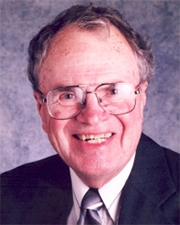
John Krumboltz in his Social Learning Theory of Career (1979) and The Planned Happenstance Theory (1999) argued that a person's professional choice is the product of countless learning experiences, planned and unplanned, accumulated throughout life, and not of a personality match to the work environment. He argued that not all life events can be planned, and therefore it is important to foster openness to unexpected opportunities, to open one's mind and take advantage of random events and situations to develop new professional directions. He called on people to "learn to love what they do," and not just look for what they "were meant to do." He saw career counseling as a framework to help the client open their mind and develop decision-making skills, flexibility, and dynamism, so they could cope with unexpected changes in the world of work (Krumboltz, 1976; Krumboltz, 1999).
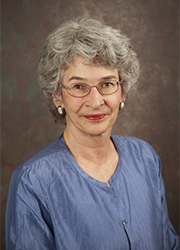
Linda Gottfredson in her Theory of Circumscription and Compromise (1981) examined how developmental processes in childhood affect future career choice. She argued that children are not driven only by personal preferences, but also by social constraints and perceptions regarding gender, social status, and personal abilities, which shape what they perceive as "suitable" or "unsuitable" for them. According to the theory, the process of occupational choice includes two main stages: gradual reduction of career options - where children reject professions perceived as incompatible with their self-perception, and compromise - which means giving up an ideal preference in favor of a more realistic option due to constraints such as occupational availability or educational requirements. Gottfredson saw counseling as a framework to help the client develop self-awareness, understand their inclinations and desires, and identify processes of reduction and compromise, among other things by exposure to a wide variety of current professions (Gottfredson, 2002).
Career Counseling in the Modern Era

The field of career counseling has developed and become research-based over the years. At Logipass,
a research-based professional guidance system has been developed that brings the principles of career counseling
to the digital world. The system allows users to undergo career counseling
based on research-based models, to identify their skills and tendencies, and to be exposed to a wide and current
range of personalized employment options. Through the combination of advanced technologies, Logipass offers an
accessible, efficient, and personalized self-counseling process, which helps each person make informed professional
decisions, in accordance with the most up-to-date research principles and practices in the world of career counseling.
Written by: Orpaz Tubol.
References:
- Gottfredson, L. S. (2002). Gottfredson's theory of circumscription, compromise, and self-creation. In D. Brown (Ed.), Career choice and development (4th ed., pp. 85-148). San Francisco: Jossey-Bass.
- Hartung, P. J. (2013). The life-span, life-space theory of careers. Career development and counseling: Putting theory and research to work, 2, 83-113.
- Herr, E. L. (2001). Career development and its practice: A historical perspective. The Career Development Quarterly, 49(3), 196-211.
- Holland, J. L. (1997). Making vocational choices: A theory of vocational personalities and work environments (3rd ed.). Odessa, FL: Psychological Assessment Resources.
- Krumboltz, J. D. (1999). Planned happenstance: Constructing unexpected career opportunities. Journal of Counseling & Development, 77(2), 115-124.
- Krumboltz, J. D., Mitchell, A. M., & Jones, G. B. (1976). A social learning theory of career selection. The Counseling Psychologist, 6(1), 71-81.
- O'Brien, K. M. (2001). The legacy of Parsons: Career counselors and vocational psychologists as agents of social change. The career development quarterly, 50(1), 66-76.
- Super, D. E. (1980). A life-span, life-space approach to career development. Journal of vocational behavior, 16(3), 282-298.
We would be happy to hear your opinion!
LogiPass has dozens of additional interesting articles dealing
with issues of screening tests and career guidance.